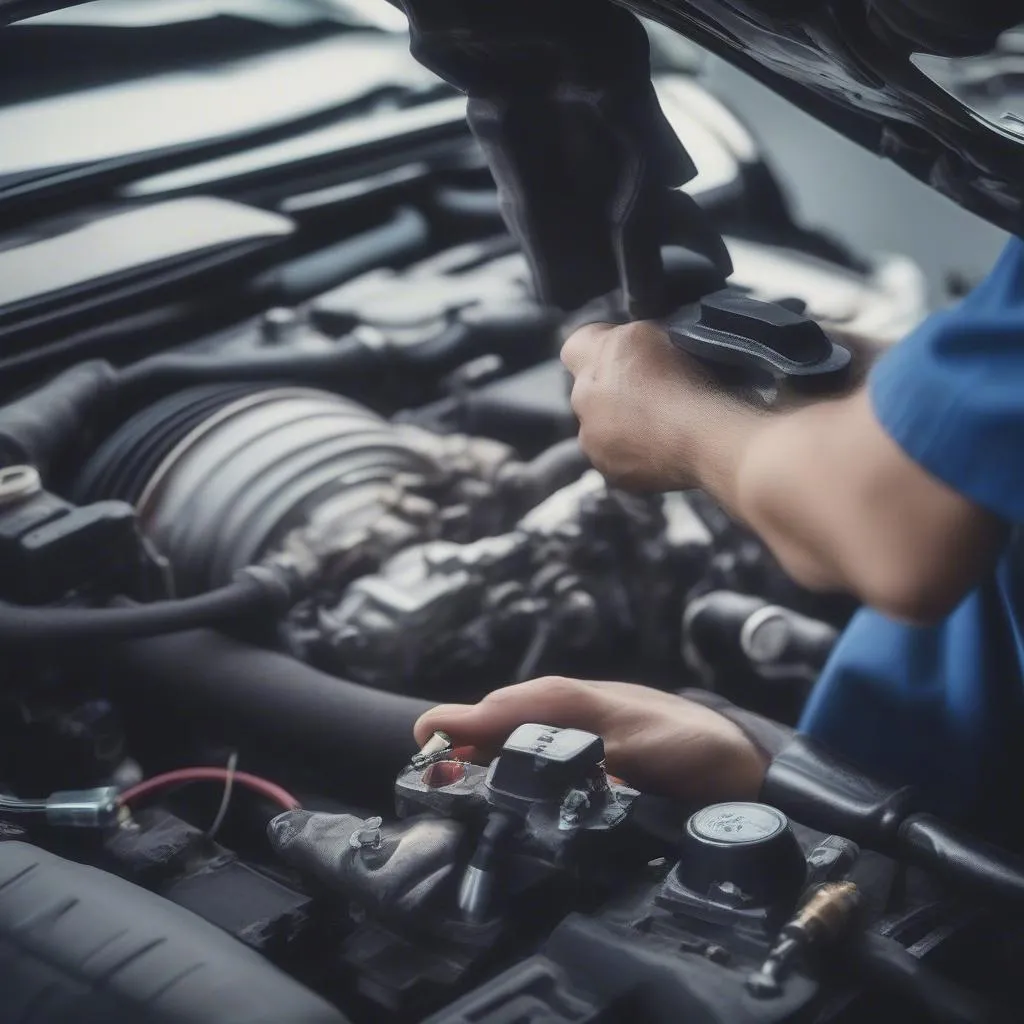Have you ever been driving down the road when your ABS light suddenly illuminates on your dashboard? You’re likely thinking, “What’s going on?” and “How do I get rid of this ABS light?” Don’t worry, you’re not alone. This is a common issue, and it can be frustrating to figure out what the problem is.
Understanding The ABS Light
The ABS light (Anti-lock Braking System light) is a warning indicator that tells you something is wrong with your car’s ABS system. It’s crucial to take this light seriously because it can impact your vehicle’s safety. The ABS system helps you maintain control of your vehicle during emergency braking situations. When the light turns on, it means there might be a problem with the system, and you might not have access to the full functionality of your ABS, especially during an emergency.
The ABS Light and Your Car’s Safety
Imagine driving through a busy city like New York City, and suddenly, your ABS light comes on. You’re approaching a red light and need to stop abruptly. This is where the ABS system kicks in. It’s a vital part of your car’s safety system, and its malfunctioning can lead to uncontrolled braking, potentially resulting in an accident. The ABS system helps you maintain control of your car during emergency braking situations by preventing your wheels from locking up.
Technical Perspective
The ABS system uses sensors to monitor the speed of each wheel. If one wheel starts to lock up, the ABS system will automatically reduce the braking force to that wheel, preventing it from skidding. This helps to maintain your control over the car and improves your braking performance.
Cost Considerations
When the ABS light is on, it could signal a simple fix like a faulty sensor, but it could also indicate more serious issues requiring repairs that might cost you more.
Why Is Your ABS Light On?
Common Reasons:
-
Faulty ABS Sensor: The ABS sensors are crucial components that monitor the speed of each wheel. A malfunctioning sensor can trigger the ABS light.
-
Low Brake Fluid: This is a common reason. Low brake fluid can impact the ABS system’s operation, leading to the ABS light turning on.
-
ABS Module Failure: The ABS module is the “brain” of the ABS system. If it malfunctions, it can lead to the ABS light coming on.
-
Faulty Wiring: Problems with the wiring connecting the ABS sensors to the ABS module can also trigger the ABS light.
-
ABS Pump Malfunction: The ABS pump plays a key role in the system. A malfunctioning pump can lead to the ABS light illuminating.
How To Get Rid Of ABS Light
Here’s a step-by-step guide:
-
Check the brake fluid level: Start by ensuring that your brake fluid level is adequate. If it’s low, add more brake fluid to the reservoir and check if the light goes off.
-
Have your ABS sensors checked: If the brake fluid level is fine, you’ll want to have your ABS sensors inspected. A faulty sensor is a common reason for the ABS light to illuminate.
-
Inspect the ABS module: If the sensors are working properly, it’s time to check the ABS module. A qualified technician can use a diagnostic tool to scan for any fault codes related to the ABS module.
-
Inspect wiring: If the ABS module is working correctly, the problem could be faulty wiring. A mechanic can inspect the wiring and address any issues they find.
-
Consider a professional: If you’re not comfortable troubleshooting the ABS system yourself, it’s best to take your car to a mechanic.
FAQ:
Q: How do I reset the ABS light after changing a sensor?
A: Resetting the ABS light after changing a sensor usually requires a diagnostic tool to clear the fault codes from the ABS module.
Q: Can I drive with the ABS light on?
A: While you can drive with the ABS light on, it’s not recommended. A malfunctioning ABS system can impact your safety during emergency braking situations.
Q: Can I reset the ABS light myself?
A: In some cases, you might be able to reset the ABS light yourself by disconnecting the car’s battery for a few minutes. However, this may not always work and can potentially cause more problems if done incorrectly.
Q: How much does it cost to fix the ABS light?
A: The cost of fixing the ABS light can vary depending on the underlying issue. A simple fix like a faulty sensor might be inexpensive, while a more complex repair like a failed ABS module can be more costly.
Q: Are there any signs of a failing ABS system besides the ABS light?
A: Yes. Besides the ABS light, other signs of a failing ABS system include the car’s wheels locking up during emergency braking, a pulsating brake pedal, or a grinding sound coming from the brakes.
Take Control:
The ABS system is an essential safety feature in your car. When the ABS light comes on, it’s crucial to investigate the issue. If you have any questions about the ABS system or need help troubleshooting, don’t hesitate to contact us at Diag XCar. We have a team of qualified automotive technicians who can help you diagnose and fix the problem.
 abs light car
abs light car
 abs sensor
abs sensor
 abs module
abs module
We can provide you with a comprehensive solution, whether it’s fixing the faulty sensors, repairing the ABS module, or addressing any wiring issues.
Contact us today for expert guidance on your ABS system!
[Whatsapp: +84767531508]